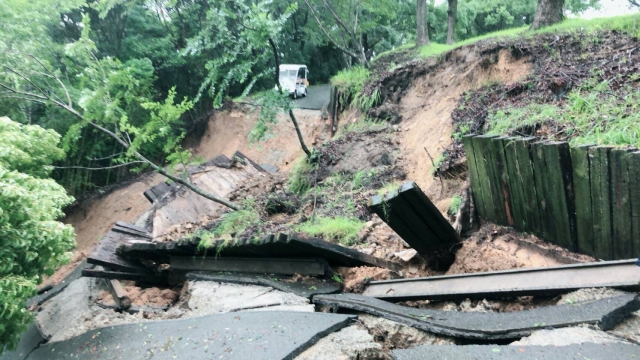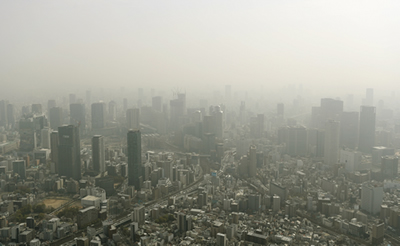Tokyo is especially prone to severe weather conditions, including typhoons, heavy rains, windstorms and snow. In the event of such conditions it is important to safeguard against injury and damage caused by strong winds, slippery roads and flying debris. Additionally, severe weather can cause delays and stoppages to transportation systems and create dangerous driving conditions.
Typhoons
The typhoon season in Japan is starting earlier recently. It will presumably from July to October, so it is important to be aware of the hazards of strong winds and heavy rains. During heavy rainfall precipitation can exceed 100mm per hour, overwhelming the drainage capacity of flood control centers. Below are some guidelines to minimize damage and injury.
- Close and lock windows securely. Move anything indoors that is breakable or that can be caught in a wind gust including plants, pots, and patio furniture.
- In the case of heavy rain, avoid using underground facilities. If you have a basement room accessible from outside, block the door and do not go inside.
- Check the TV or radio for updated weather reports and road conditions. Find out beforehand where English news is broadcast.
- Blackout and water outage can occur in the worse cases. Prepare water supplies and flashlights in advance.
- Beware of flying debris when outdoors.
- Stay away from rivers and waterfronts.
- Use stairs instead of elevators in buildings.
- Depending on the area, there may be secondary disasters such as landslides caused by heavy rain. Check the area in advance.

Heavy Rain
The term“gerira gouu”(ゲリラ豪雨) refers to the phenomenon of highly localised heavy rain. Though it is not an official term, the expression, which means“guerilla downpour”is used due to the sudden and unpredictable nature of the phenomenon. The typical season for this kind of rainfall is summer, from July to the end of September, though it can occur outside of these months.
Though it’s hard to tell when one of these downpours will happen, there are some meteorological signs to be on the lookout for:
- The approach of thick black clouds, and a darkening of the sky in the vicinity
- Thunder and lightning
- A cool wind blowing
- Large rain droplets or hail
Here are some measures you can take to prevent getting caught out by guerilla rain:
- Check the weather forecast frequently.
- During the season, carry an umbrella even if it doesn’t look like it will rain
- As these downpours typically don’t last long, take shelter until the rain stops rather than rushing to your destination
- Flooding can occur, so when driving, be wary of downward slopes in the road
- Stay away from rivers and lower places.

Heavy rainfall warning
Beginning in 2019, heavy rainfall will be categorized on a five-level scale for disaster prevention purposes. These levels will be reported through the news and other media as (大雨警戒レベル) in Japanese, and refer to the measures recommended or taken by relevant authorities for the protection of communities.
Warning Level 5: All measures necessary to protect life are advised.
Warning Level 4: Evacuation is recommended or directed.
Warning Level 3: Evacuation preparations. Evacuation of the elderly commences.
Warning Level 2: Checking of evacuation spots and routes.
Warning Level 1: Increase in disaster readiness.
Link for Heavy Rainfall Warnings/Advisories
Snow
It is unusual for snowfall in Tokyo to continue for more than a few days. While deep snow is unlikely in Tokyo, slips and falls due to frozen roads remain a significant danger. Additionally, since public transportation in Tokyo is ill-prepared for snow, train and bus delays and stoppages can be severe.
See also: our featured article: “Things to Know about Winter Driving in Japan ”.Dust Storms (Yellow Sand)
On occasion, kōsa (黄砂, yellow sand) from the Gobi Desert and other parts of the Asian continent is carried to Japan by spring wind currents, appearing in Japan as a form of visibility-obstructing dust storm or smog. Recent studies have found that Aeolian dust may contain high concentrations of ultrafine particulate matter known as PM 2.5 and contaminants that may result in adverse health effects. While the impact in Japan is much less severe than its area of origin in Mongolia and China, precautions such as wearing a mask and keeping doors and windows shut are advised on days of heavy dust concentration.



